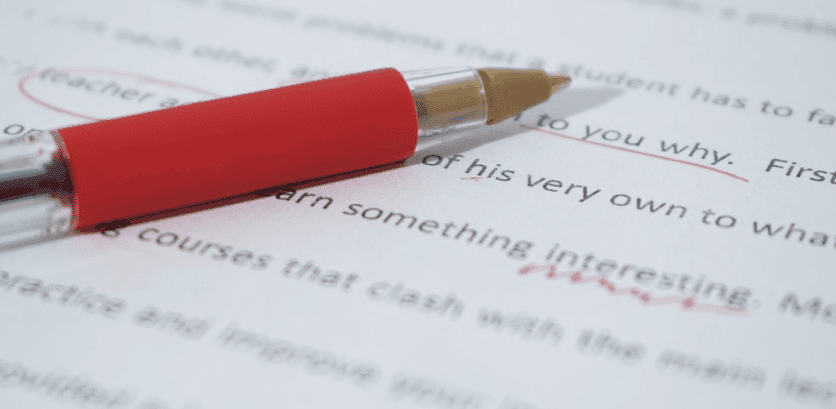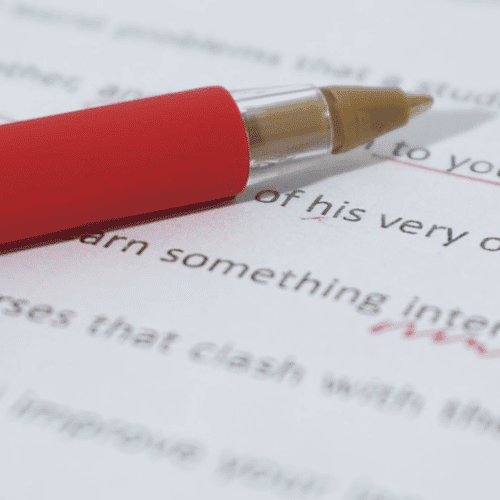An article written by Arabella, Berlin-based translator, language teacher and jazz saxophonist.
What is proofreading?
Proofreading and cross-checking are two terms used in the translation industry that are sometimes used interchangeably. In simple terms, proofreading means checking a text for grammar and punctuation errors, whilst cross-checking involves comparing a translation (target text) to the original (source text). But when I am asked to ‘proofread’ a translation, I am provided with the source text and automatically have to include the process of cross-checking. In this sense, ‘proofreading’ is an umbrella term; and it is what this article is about.
Who does the proofreading?
That depends. Ideally, someone who did not do the translation in the first place, and can look at the text with ‘fresh’ eyes. Sometimes translators spend twenty minutes working on a single sentence. Maybe the syntax was confusing, maybe the terminology was new, or maybe those feisty commas were creating comprehension confusion. So when the translation is finished, we should be satisfied with the content and style. The biggest challenge, then, is to return to the same text 30 minutes later and objectively judge its quality. This is why any professional translation service will have one person to translate the text and another to proofread. In Germany, this is known as the Vier-Augen-Prinzip (the four-eye principle), which we call the two-man rule. It is always worth asking a translation company if they use this approach, as it improves accuracy and quality. But whether you are proofreading your own translations or someone else’s, having a set process will help with quality checking.
Proofreading technical texts
How to proofread a text depends slightly on the text type. With technical texts (e.g. user manuals, technical marketing or engineering documents), it is possible to create a checklist of mutually exclusive elements that you can look for. What do I mean? Well, situate the two texts side by side (either on screen or paper) and go through once, looking for all the numbers. Are there any discrepancies? Can you see both numbers in both texts? Does the formatting translate? In German, you might see ‘2.6 – 2.4 litres/hour’ – i.e. numbers descending. But these numbers need to be ascending in English. This can be repeated for elements such as names, terminology, dates, places etc. It is much easier to look for a certain type of information than to try and absorb the whole text over and over again. With longer sentences, look for verbs to make sure that the elements relate to each other correctly and haven’t become muddled. When you have done this, read the English text through without referring to the source and make sure that, despite being a technical text, it flows nicely. Finally, carry out manual spelling and grammar checks, i.e. do not rely on those squiggly lines to appear underneath words. It is safer to go to ‘Review’ -> ‘Spelling & Grammar’, or the equivalent option. If you are working in a TMS (translation memory system), then also complete a quality check, which will compare the source and target formatting and often reveals invisible errors.
Proofreading non-technical texts
With non-technical texts (e.g. creative marketing, website copywriting, articles, or anything prose-like), it is also possible to go through the text and look for numbers, dates, and any other types of information that can be isolated. And that is a good place to start. But after that, it is important to re-read the source text in slightly larger segments. I tend to read two or three sentences at a time to not only remind myself of the content, but to get a feel of how the whole text flows and what the tone is. This is very hard to do when reading one sentence at a time. Once I have done this, I read the equivalent section of the target text. I need to know two things: Firstly, is the message correctly conveyed from source to target? Secondly, is it conveyed in the same tone of voice? If the answer is yes and yes, then the translation is a success! I also complete manual spelling, grammar and quality checks before reading the whole target text through – without referring to the source.
A final note
A translation should be a valid text in its own right. A difficult source text is not an excuse for a clumsy translation. If something seems illogical in the translation, return to the source and re-assess.
Phew! Job done.
We LOVE language.

